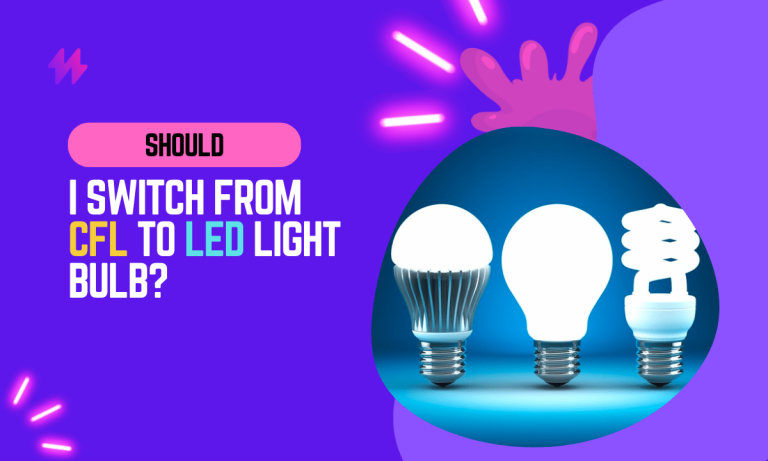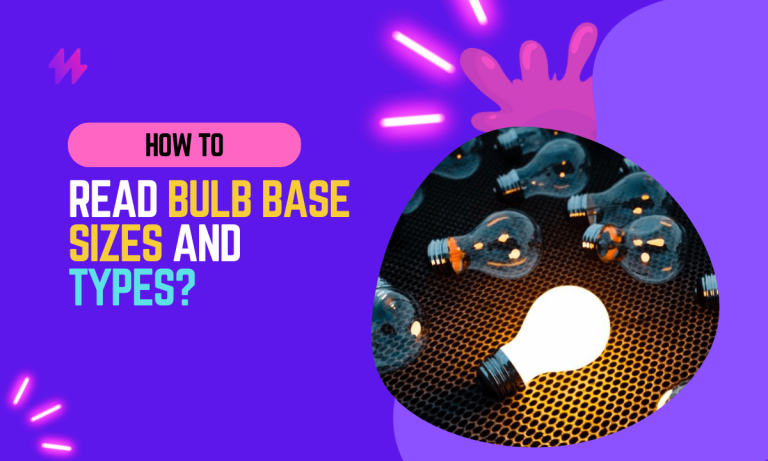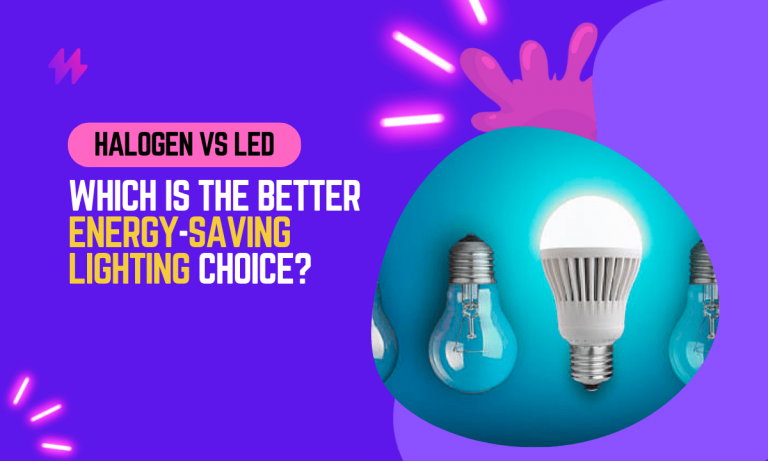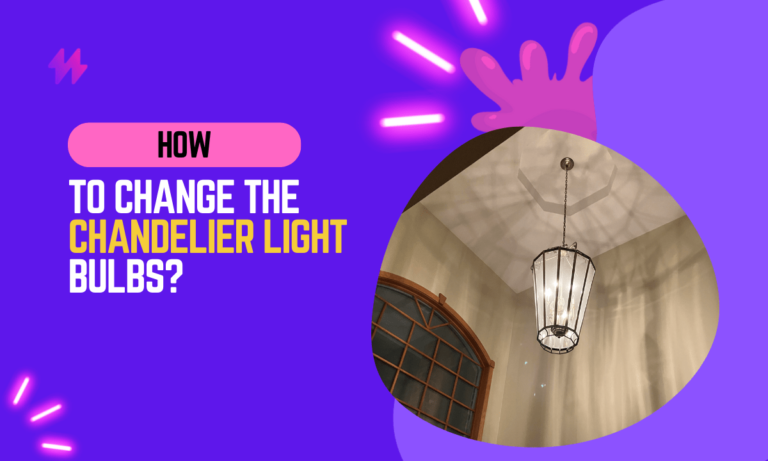Do LED Light Bulbs Get Hot?
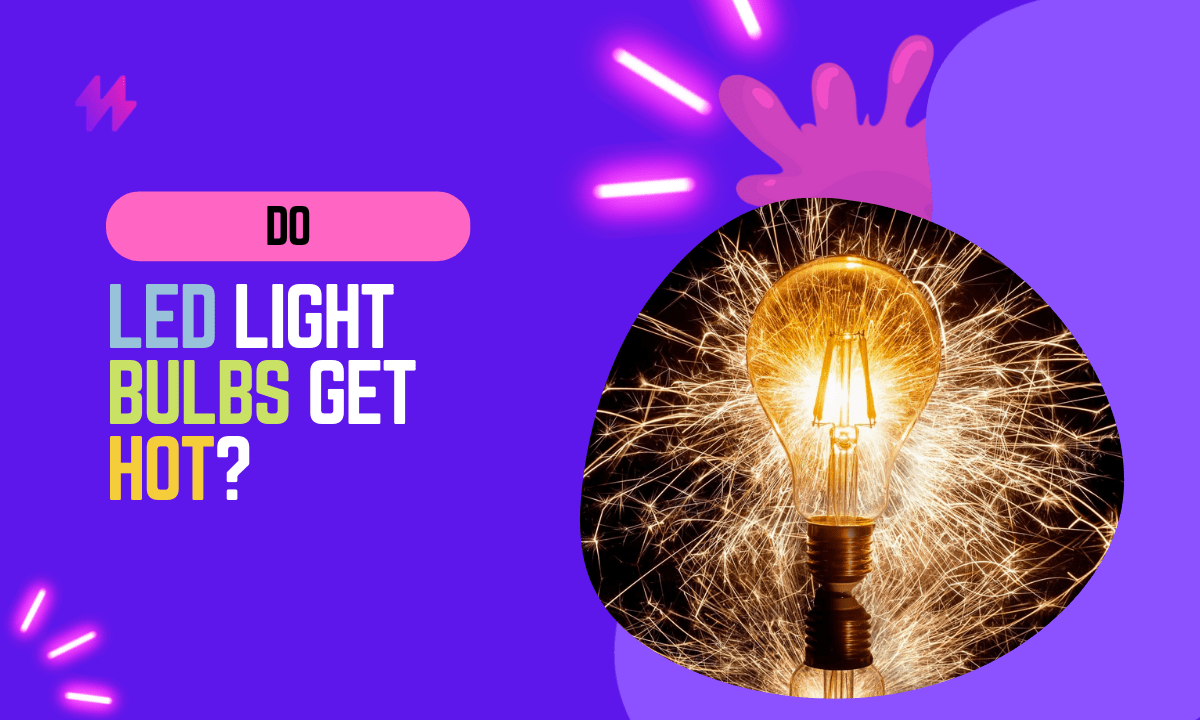
Have you ever wondered why your LED light bulbs don’t get as hot as your grandma’s old incandescent bulbs? It’s not just because LEDs are energy efficient, but it’s also because they’re heat-efficient. And let’s be real, no one wants to burn their fingers changing a light bulb or have their AC working overtime just because their light bulbs are acting like mini heaters.
So, let’s dive into the science behind it and why your LEDs are the most chill bulbs on the block. We’re talking about heat dissipation, comparison to traditional incandescent bulbs, and tips on how to keep your LEDs running cool. So, grab your favorite beverage, and let’s get to it, folks.
LED technology has revolutionized the way we think about lighting because these bulbs are designed to convert electrical power into usable light output more efficiently than traditional incandescent light bulbs. Additionally, mechanisms such as heat sinks and improved thermal conductivity help maintain a low bulb temperature, ensuring that your LED bulb will not get as hot as other traditional light bulbs, ultimately enhancing their performance in various applications, including LED headlight bulbs and floodlights.
How Do LED Light Bulbs Get Hot? | Understanding Heat Production in LED Lights
So, you may be wondering, “If LEDs don’t produce as much heat as incandescent bulbs, where does all the heat come from?” The answer is simple: electricity.
All electrical devices, including LED light bulbs, produce heat as a byproduct of their operation. In LED light bulbs, this heat is generated by the LED chip, which converts electrical energy into light energy. The heat is then dissipated through the heat sink, a device designed to transfer heat away from the LED chip and into the surrounding environment.
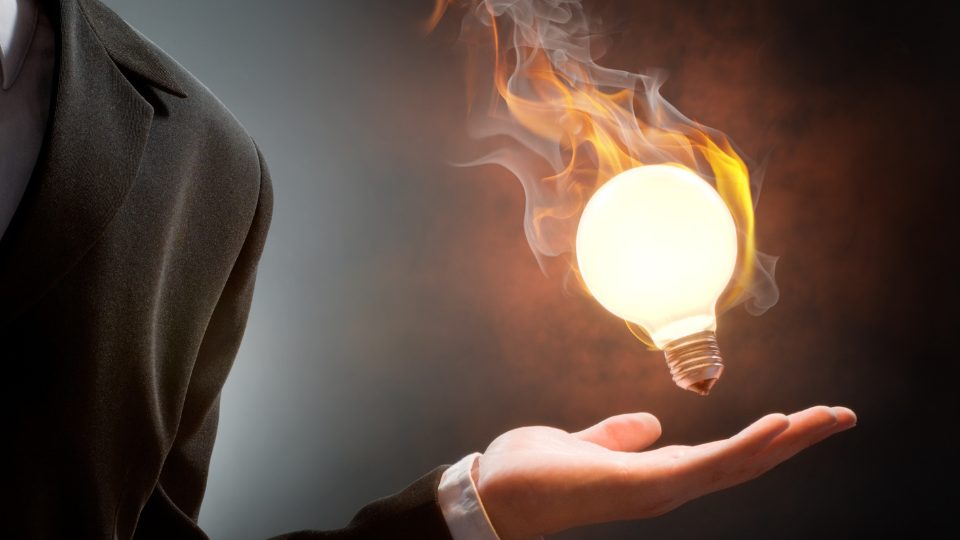
But it’s not just the LED chip that produces heat, the driver which is an electronic circuit that regulates the current flowing through the LED also will get hot and will be dissipated through the heat sink as well.
It’s important to note that while all LED light bulbs produce some heat, they are still much more heat-efficient than traditional incandescent bulbs. Incandescent bulbs produce light by heating a filament to a high temperature, which results in a lot more heat being generated and released into the surrounding environment.
In contrast, LED light bulbs produce light through a process called electroluminescence, which generates much less heat overall.
Also check: Can You Use LED Bulbs In The Fridge?
LED light bulbs are a cutting-edge solution to lighting challenges, effectively managing to generate usable brightness with significantly less heat than traditional options. With advancements such as high-power LEDs and sophisticated heat sink designs, manufacturers are continually improving led performance, allowing for greater thermal resistance and efficiency in applications ranging from residential lighting to high-output headlights.
Comparison of LED Light Bulbs and Traditional Incandescent Bulbs: Heat Production and Efficiency
Understanding Heat Production in LED Light Bulbs: A Comparative Analysis
As previously mentioned, incandescent bulbs produce a lot more heat than LED light bulbs. In fact, around 90% of the energy used by incandescent bulbs is converted into heat, while only a small fraction of the energy used by LED light bulbs is converted into heat. This means that incandescent bulbs can heat up a room quickly and require more cooling, while LED lights produce significantly less heat and have a much lower impact on the room temperature.
As a result of their efficient design, LED light bulbs generate substantially less heat than their incandescent counterparts, leading to improved energy savings. Moreover, the lower bulb heat ensures that LED devices, such as the real Philips LEDs, have a longer lifespan due to minimized thermal stress compared to traditional glass bulbs.
Efficiency of LED Light Bulbs: A Detailed Comparison with Traditional Incandescent Bulbs
Incandescent bulbs are not very energy efficient, converting only about 5% of the energy they use into light. In contrast, LED light bulbs are highly efficient, converting around 80% of the energy they use into light. This means that LED light bulbs use significantly less energy to produce the same amount of light as incandescent bulbs, which can lead to significant savings on energy bills over time.
Unlike incandescent bulbs, which waste so much energy producing heat instead of light, LED light bulbs offer a remarkable shift in energy efficiency. The optical power of an LED light bulb, combined with their advanced heatsink technology, ensures that the actual light bulb portion consumes far less wattage for higher light output, ultimately reducing bills while providing brighter illumination.
Lifespan of LED Bulbs: Understanding Heat Production and Efficiency
Incandescent bulbs have a relatively short lifespan, typically only lasting around 1,000 hours. In contrast, LED light bulbs can last for tens of thousands of hours, making them significantly more durable and long-lasting.
LED light bulbs exhibit impressive durability and longevity, often lasting tens of thousands of hours compared to the mere 1,000-hour lifespan of traditional incandescent bulbs. This extended lifespan is attributed to their efficient design and thermal management, as LED bulbs generate less heat, keeping the junction temperature low and enhancing reliability in various applications, including automotive lighting like halogen headlights.
Heading: Understanding Color Temperature in LED Light Bulbs and Its Impact on Performance
Traditional incandescent lamps give off a warm yellow light, and the color temperature is around 2700K. On the other hand, LED light bulbs are available in a wide range of color temperatures, from warm yellow to cool blue, enabling them to better match the specific lighting needs of different environments and applications.
LED bulbs not only provide a variety of color temperatures but also utilize advanced technologies to manage heat effectively. With their superior heat-sink designs, LED light bulbs can maintain a lower operational temperature, ensuring that they do not produce excessive heat compared to traditional incandescent options.
Exploring Dimming Capabilities in LED Light Bulbs: Heat Production and Efficiency
Many incandescent bulbs don’t work well with dimmer switches and you may experience issues with flickering or an inability to fully dim the light. LED lights are generally compatible with dimmer switches, but some may require specific dimmers to work properly.
Must read: Can you Paint LED Light Bulbs?
Many incandescent bulbs don’t work well with dimmer switches, and you may experience issues with flickering or an inability to fully dim the light. Compared to old bulb designs, certain light bulbs like LED options can handle dimming much better, allowing for a smoother transition in brightness without the discomfort of fluctuating light. LED light bulbs generate light efficiently while consuming significantly less wattage, making them a preferred choice for overhead lighting solutions. As these bulbs operate at lower temperatures, the heat sink temperature remains in check, ensuring they emit little heat, which enhances their lifespan and performance in various applications including automotive lighting.
Understanding the Impact of Heat on LED Light Bulbs

While LED light bulbs produce significantly less heat than traditional incandescent bulbs, it is still important to consider the impact of heat on the performance and longevity of these devices.
Reduced Efficiency: Increased heat can reduce the efficiency of the LED chip and driver, which can decrease the overall light output of the bulb.
Shortened lifespan: Prolonged exposure to high temperatures can also shorten the lifespan of the LED chip and other components of the bulb. This is because high temperatures can cause damage to the materials and structure of these devices, leading to a reduction in their performance and lifespan over time.
Light output degradation: High temperatures can cause the light output of the LED chip to degrade over time, leading to a loss of brightness and color quality.
To mitigate these effects, manufacturers have developed several heat dissipation methods to keep the temperature of the LED chip and driver low. This includes using larger heat sinks or additional cooling elements such as fans or liquid cooling systems. Moreover, as a consumer, you can also help by keeping the bulbs in well-ventilated areas or using a ceiling fan to circulate the air around the light fixtures to reduce the internal temperature.
Note: Always check the maximum operating temperature before purchasing a bulb, and make sure the environment in that you want to use the LED bulb in is within that range.
Although LED light bulbs efficiently generate light while consuming less energy, they still have some thermal considerations that can impact their performance. It’s essential to recognize how consistently high temperatures can affect the LED characteristics, making it crucial to ensure proper heat management systems, like a bulb heat-sink, are in place to optimize light bulb longevity and prevent excess heat from degrading light output.
Conclusion: Understanding the Heat Production of LED Light Bulbs
In conclusion, while LED light bulbs are acclaimed for their energy efficiency and long lifespan, they do generate heat, but significantly less than traditional incandescent or halogen bulbs. The heat produced by LEDs is primarily due to electrical inefficiencies and is emitted at the base of the bulb rather than the light-emitting part itself. This characteristic means that while the LED bulb’s surface may feel warm to the touch, it is much cooler compared to other types of bulbs when in operation. This lower heat output not only enhances the safety of LED bulbs by reducing the risk of burns or fire but also contributes to their extended operational life, as excessive heat can degrade light quality and speed up the failure of lighting components.
Moreover, managing the heat that LED bulbs do generate is crucial for maintaining their efficiency and longevity. Manufacturers often integrate heat sinks into the design of LED bulbs, which help dissipate the heat away from the critical components of the bulb. Proper installation and ensuring adequate ventilation around LED fixtures will also aid in heat management, preventing any potential overheating. By understanding the heat dynamics of LED bulbs, consumers can better appreciate the benefits these lights offer and make informed decisions about their use in both residential and commercial settings. The cooler operation of LEDs not only makes them safer but also more cost-effective in the long run, as they contribute to lower energy consumption and reduced maintenance costs compared to their incandescent counterparts.
Do LED Light Bulbs Get Hot | Factors Influencing Heat Generation in LED Light Bulbs
The question of whether LED light bulbs get hot is influenced by several factors, including their material composition and design. Unlike traditional light bulbs, which waste energy in the form of heat, certain LED bulbs emit light more efficiently, producing less heat under normal conditions. However, the design of the bulb, such as the presence of a fan-based heat sink or the use of heat-spreading materials, can significantly impact the temperature. High wattage LEDs or those in poorly ventilated fixtures can rise to higher degrees Fahrenheit, potentially reaching temperatures that may cause concern. For instance, while original halogen bulbs glow hotter, aftermarket headlights like the Putco Silver-Lux run cooler due to their effective use of copper heat sinks. The actual bulb portion of an LED module can create enough heat that proper heat management becomes essential. Cooperating with the manufacturer’s guidelines and selecting bulbs with adequate thermal management features can mitigate the risk of overheating, ensuring that the lights perform optimally without excessive temperature change.
Do LED Light Bulbs Get Hot | Material Composition of LED Light Bulbs
The material composition of LED light bulbs plays a crucial role in their heat generation. Unlike traditional incandescent or halogen bulbs, which waste a significant amount of energy as heat, LED bulbs are designed to convert electrical current into measurable light output efficiently. High-quality LED manufacturers often use advanced materials that help manage heat more effectively. For instance, a bulb that utilizes a large heat sink can dissipate heat better than one with a non-fan heat sink, thus preventing excessive heat buildup. This careful construction means that while certain light bulbs may generate heat, LEDs typically emit little heat compared to other types of bulbs.
Bulbs with high wattage may lead to higher temperatures if not designed properly. The type of materials used, such as a heat sink or reflective coatings, directly influences how much thermal energy is managed. OEM halogen bulbs and old bulbs often rise in temperature significantly, affecting their performance and longevity. On the other hand, LED bulbs can maintain lower heat levels due to their efficient design. For example, a high-power LED bulb emits photons while keeping heat sink temperatures low, ensuring that the bulb doesn’t become excessively hot. Companies that produce LED lighting continue to innovate in both material composition and design to enhance the thermal capability of their products while maintaining high levels of light output.
Design and Construction Variations
The design and construction of LED light bulbs significantly influence whether they get hot. High power bulbs, such as those used in street glow applications, often integrate advanced radiators that help manage excess heat. These bulbs typically feature high heat sinks which enhance their heat dissipation capability. For instance, reflector designs allow the bulb to direct light more efficiently while also mitigating heat accumulation. In contrast, normal light designs may generate higher temps due to inadequate thermal management. Manufacturers like bulb companies continually research material emissions to ensure that their products can operate without excessive heating.
The specific LED wattage and the way a bulb is constructed play crucial roles in heat generation. A high wattage LED bulb consumes more energy, which can result in elevated temperatures if not designed properly. For example, the same diode emits light in various configurations, with some setups causing the bulb to get a little hotter than others. Oracle bulbs might incorporate sensors to monitor and adjust performance, ensuring effective regulation of thermal output. Unlike a headlight bulb, which resides in an enclosed headlight housing, LED bulbs dispersed in overhead light fixtures often rely on proper ventilation to prevent overheating and maintain optimal functionality.
The Safety Aspects of Heat in LED Bulbs
Understanding the safety aspects of heat in LED bulbs is crucial for both consumers and manufacturers. While it is a misconception that all LED light bulbs generate excessive heat, the truth is that do LED light bulbs get hot depends largely on their design and materials. Most LED bulbs are designed to consume less energy than traditional bulbs, which means they typically waste less energy as heat. However, if a bulb produces significant heat, it may be due to inadequate heat dissipation capabilities or poor material choices. A bulb that glows XHP might emit more heat, and thus understanding the accurate thermal heat management in LEDs is essential. By selecting LED lights that are engineered for better heat management, users can enjoy the benefits of energy efficiency without the risk of overheating, ensuring a safer environment at home or in any setting.
Risk of Overheating in LED Light Bulbs
LED light bulbs are often praised for their energy efficiency, but they can still generate heat under certain conditions. Typical questions arise about whether “Do LED Light Bulbs Get Hot.” While traditional incandescent bulbs waste energy through heat, an LED light bulb consumes significantly less electricity, leading to lower heat production. However, as the LED rises in temperature due to prolonged use, the material emits heat that can contribute to overheating if not managed appropriately.
Certain characteristics of LED bulbs, including their heat capability, also play a crucial role in determining their risk of overheating. A headlight bulb doesn’t generate as much heat as incandescent alternatives, yet the compact nature of LEDs may result in increased heat concentration. Bulbs designed with better heat dissipation mechanisms, like the Glow XHP series, can mitigate this risk effectively. Awareness of these factors can help users choose safer LED options and monitor their use to avoid potential overheating issues.
Safety Standards for LED Heat Management
Safety regulations are put in place to ensure that LED light bulbs operate efficiently without posing a risk of overheating. These standards help to monitor how much heat the bulbs generate during use, addressing the question, “Do LED Light Bulbs Get Hot?” By adhering to these guidelines, manufacturers can reduce the likelihood of heat-related issues, which can arise from lights that waste energy through excessive heat output.
Testing and certification processes are essential to guarantee that LED bulbs meet safety benchmarks. These protocols assess various factors, including thermal management practices, which directly impact performance. As a result, consumers can confidently select products that minimize risks associated with overheating, emphasizing the importance of understanding whether “Do LED Light Bulbs Get Hot?” and how to choose safer options.
Tips for Managing Heat in LED Lighting
Managing heat in LED lighting is essential for maintaining efficiency and longevity. One key aspect is to consider the placement of bulbs, as tightly enclosed fixtures can trap heat and contribute to performance issues. It is important to recognize that while LED light bulbs are designed to produce less heat than traditional bulbs, they can still generate warmth during operation. Understanding how and where lights waste energy can help reduce heat accumulation. This leads to better performance and a more comfortable environment. The question, “Do LED Light Bulbs Get Hot?” is often answered with a yes, highlighting the need for proper management to ensure optimal function and safety.
Optimal Placement of LED Light Bulbs
Proper placement of LED light bulbs plays a crucial role in managing heat. While many might wonder, “Do LED light bulbs get hot?” the answer often depends on where they are installed. Positioning LED bulbs in well-ventilated areas allows for better air circulation, which can help dissipate heat more effectively. This is particularly important in enclosed fixtures where heat can accumulate, leading to potential overheating.
Avoiding placement near heat-sensitive materials is important to maintain safety and efficiency. Recessed lighting or tightly enclosed fixtures can trap heat, raising the question of how hot these bulbs can get. Selecting the right location for your LED bulbs can not only extend their lifespan but also ensure they operate within safe temperature limits. Understanding the implications of placement is vital for anyone concerned about heat generation in their lighting solutions.
Choosing Bulbs with Better Heat Dissipation
Selecting LED light bulbs designed for better heat dissipation can significantly influence how hot they get during operation. One key factor to consider is the thermal management features integrated into the bulb’s design. Many manufacturers utilize heat sinks and effective airflow systems to minimize heat retention. By asking, “Do LED light bulbs get hot?”, consumers can determine which products are engineered with superior heat-dissipating materials, enhancing both performance and durability.
Another aspect to explore is the wattage and lumen output of LED bulbs. Higher wattage often correlates with increased heat generation. Choosing LED bulbs that balance brightness and lower wattage can lead to less heat accumulation. Understanding, “Do LED light bulbs get hot?” is essential for making informed choices that not only provide adequate illumination but also prioritize safety through effective heat management solutions.

